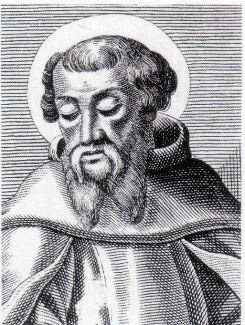Great Church
Great Church refers to a concept and period in the history of Christianity that denotes the emergence and establishment of the major Christian churches, particularly after the East–West Schism in 1054, which led to the separation between the Eastern Orthodox Church and the Roman Catholic Church. The term is often used to describe the period when these churches gained significant influence, both spiritually and politically, in Europe and the Byzantine Empire, shaping the religious landscape of the Middle Ages.
History[edit | edit source]
The concept of the Great Church is rooted in the early development of Christianity, following the Edict of Milan in 313, which granted Christianity legal status within the Roman Empire. This period saw the consolidation of Christian doctrine, the formation of the New Testament, and the establishment of the ecclesiastical hierarchy, including the roles of bishops, priests, and deacons.
East–West Schism[edit | edit source]
The East–West Schism, also known as the Great Schism, was a pivotal event in the history of the Great Church. It occurred in 1054, culminating from theological, political, and cultural disputes between the Eastern Orthodox Church and the Roman Catholic Church. Key issues included the Filioque clause in the Nicene Creed, the authority of the Pope, and liturgical practices.
Influence[edit | edit source]
The Great Church played a crucial role in the Middle Ages, influencing European culture, art, and politics. It was involved in the establishment of universities, the promotion of literacy and education, and the commissioning of significant art and architecture, such as cathedrals and monasteries.
Political Role[edit | edit source]
Throughout the Middle Ages, the Great Church had significant political influence. The Pope in the West and the Patriarch in the East wielded considerable power, often acting as mediators between conflicting monarchs or endorsing crusades.
Architecture[edit | edit source]
The architecture of the Great Church is characterized by the construction of grand cathedrals and basilicas, many of which are renowned for their Gothic architecture, Romanesque architecture, and Byzantine architecture. These buildings were not only places of worship but also symbols of the church's power and wealth.
Legacy[edit | edit source]
The legacy of the Great Church is evident in its enduring influence on Christian theology, liturgy, and ecclesiastical structure. It laid the foundation for modern Christianity and continues to shape the practices and beliefs of millions of Christians around the world.
Search WikiMD
Ad.Tired of being Overweight? Try W8MD's physician weight loss program.
Semaglutide (Ozempic / Wegovy and Tirzepatide (Mounjaro / Zepbound) available.
Advertise on WikiMD
|
WikiMD's Wellness Encyclopedia |
| Let Food Be Thy Medicine Medicine Thy Food - Hippocrates |
Translate this page: - East Asian
中文,
日本,
한국어,
South Asian
हिन्दी,
தமிழ்,
తెలుగు,
Urdu,
ಕನ್ನಡ,
Southeast Asian
Indonesian,
Vietnamese,
Thai,
မြန်မာဘာသာ,
বাংলা
European
español,
Deutsch,
français,
Greek,
português do Brasil,
polski,
română,
русский,
Nederlands,
norsk,
svenska,
suomi,
Italian
Middle Eastern & African
عربى,
Turkish,
Persian,
Hebrew,
Afrikaans,
isiZulu,
Kiswahili,
Other
Bulgarian,
Hungarian,
Czech,
Swedish,
മലയാളം,
मराठी,
ਪੰਜਾਬੀ,
ગુજરાતી,
Portuguese,
Ukrainian
Medical Disclaimer: WikiMD is not a substitute for professional medical advice. The information on WikiMD is provided as an information resource only, may be incorrect, outdated or misleading, and is not to be used or relied on for any diagnostic or treatment purposes. Please consult your health care provider before making any healthcare decisions or for guidance about a specific medical condition. WikiMD expressly disclaims responsibility, and shall have no liability, for any damages, loss, injury, or liability whatsoever suffered as a result of your reliance on the information contained in this site. By visiting this site you agree to the foregoing terms and conditions, which may from time to time be changed or supplemented by WikiMD. If you do not agree to the foregoing terms and conditions, you should not enter or use this site. See full disclaimer.
Credits:Most images are courtesy of Wikimedia commons, and templates, categories Wikipedia, licensed under CC BY SA or similar.
Contributors: Prab R. Tumpati, MD


